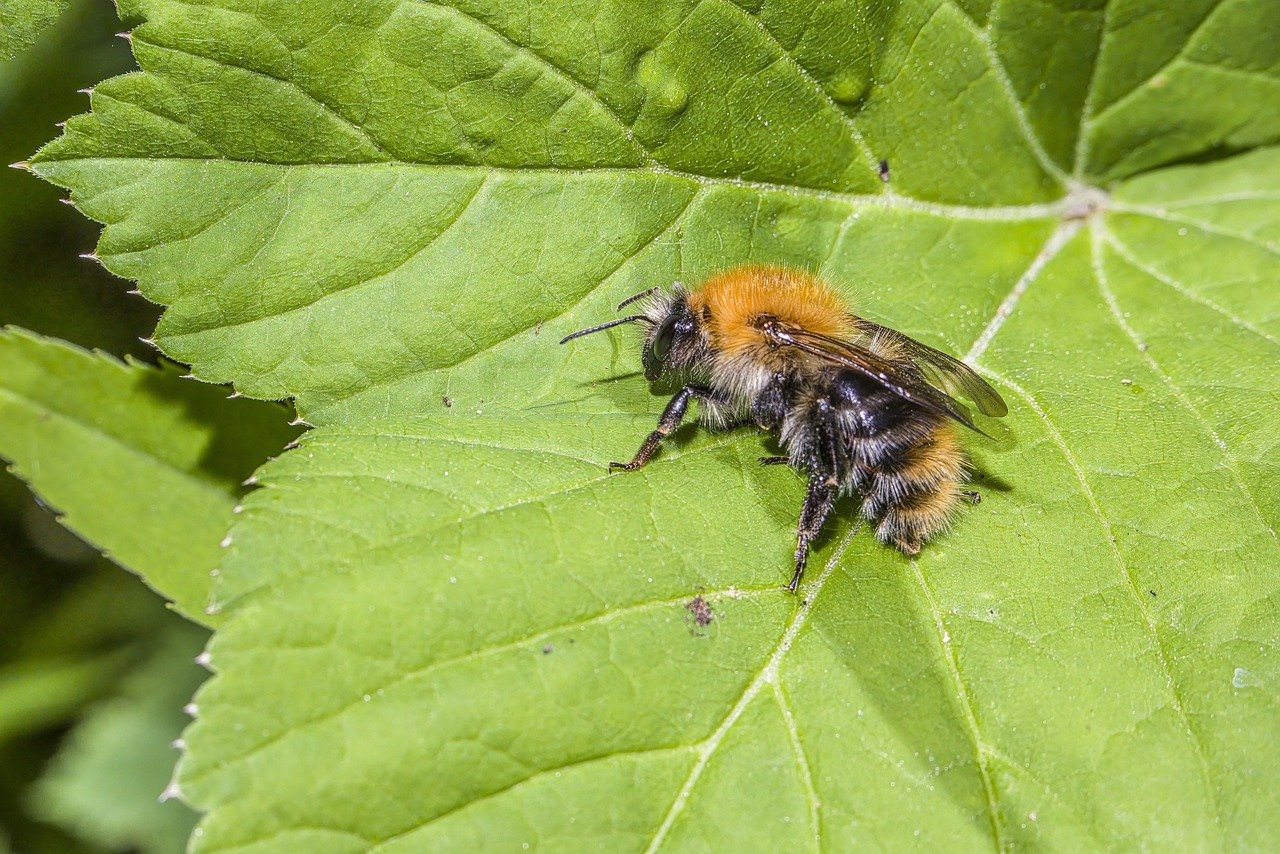The Common Carder Bee (Bombus pascuorum) is a species of bumblebee belonging to the genus Bombus within the family Apidae. Here are some key features and characteristics of the Common Carder Bee:
- Appearance: Common Carder Bees are relatively small to medium-sized bumblebees with a robust and furry appearance. They have a distinctive ginger to brownish-orange coloration with bands of yellow or white hair on their thorax and abdomen. The coloration may vary slightly depending on geographic location and individual variation.
- Size: Common Carder Bees typically measure between 1 to 2 centimeters (0.4 to 0.8 inches) in length, making them similar in size to many other bumblebee species.
- Distribution: Common Carder Bees are widely distributed across Europe and parts of Asia, including the British Isles, mainland Europe, Scandinavia, and western Asia. They are commonly found in a variety of habitats, including grasslands, meadows, gardens, and urban areas.
- Habitat: Common Carder Bees inhabit diverse habitats with abundant vegetation and floral resources. They are often found in grassy areas with flowering plants, where they forage for nectar and pollen. They are also known to nest in grassy tussocks, under vegetation, or in abandoned rodent burrows.
- Behavior: Common Carder Bees are social insects that live in colonies consisting of a queen, workers, and males. Unlike some other bumblebee species, Common Carder Bee colonies are relatively small, typically containing a few dozen to a few hundred individuals. They are known for their gentle and non-aggressive behavior compared to some other bumblebee species.
- Pollination: Like other bumblebees, Common Carder Bees play an important role as pollinators of many flowering plants, including wildflowers, fruit trees, vegetables, and crops. They collect nectar and pollen from flowers to feed themselves and their developing offspring, inadvertently transferring pollen between flowers in the process.
- Conservation: Common Carder Bees, like other pollinators, face threats from habitat loss, pesticide use, climate change, and diseases. Conservation efforts aimed at preserving and restoring diverse habitats with abundant floral resources are essential for supporting healthy populations of Common Carder Bees and other pollinators.
Overall, the Common Carder Bee is a fascinating and ecologically important species valued for its role as a pollinator and its contributions to ecosystem health and biodiversity.
Visited 852 times, 2 visit(s) today
Views: 1265
Subscribe to the newsletter:
